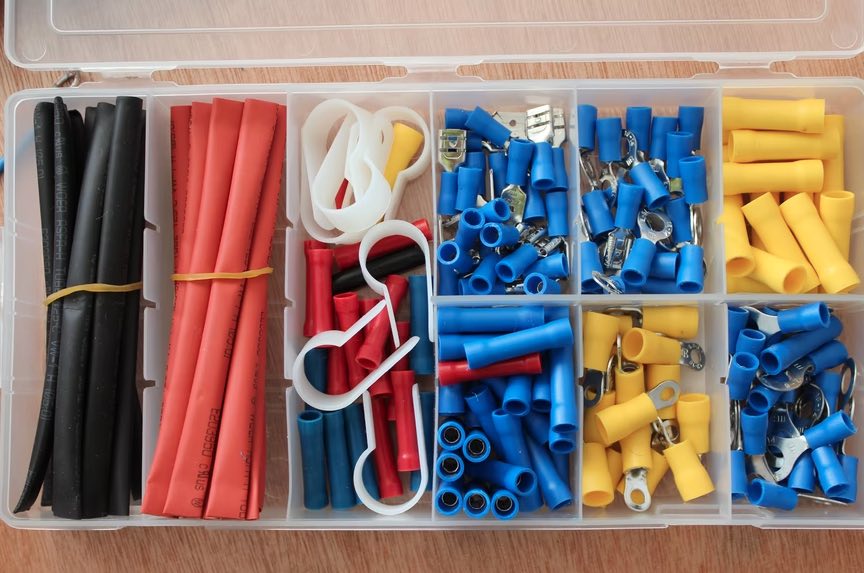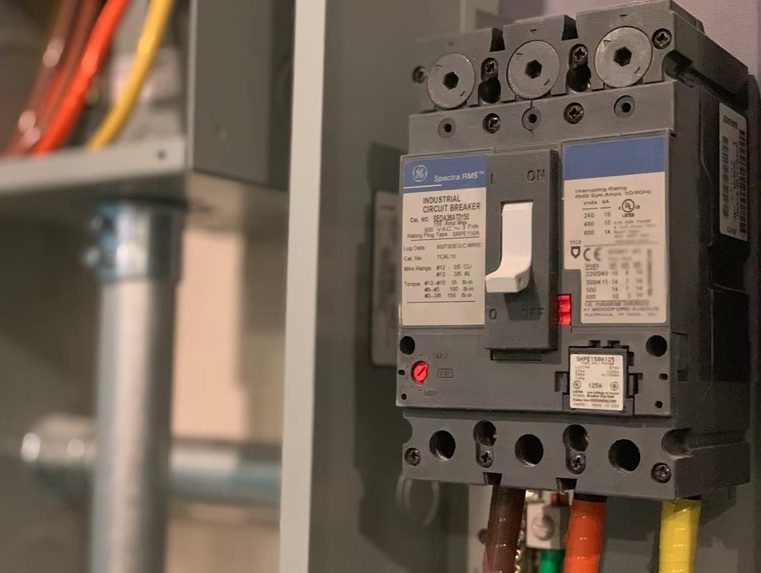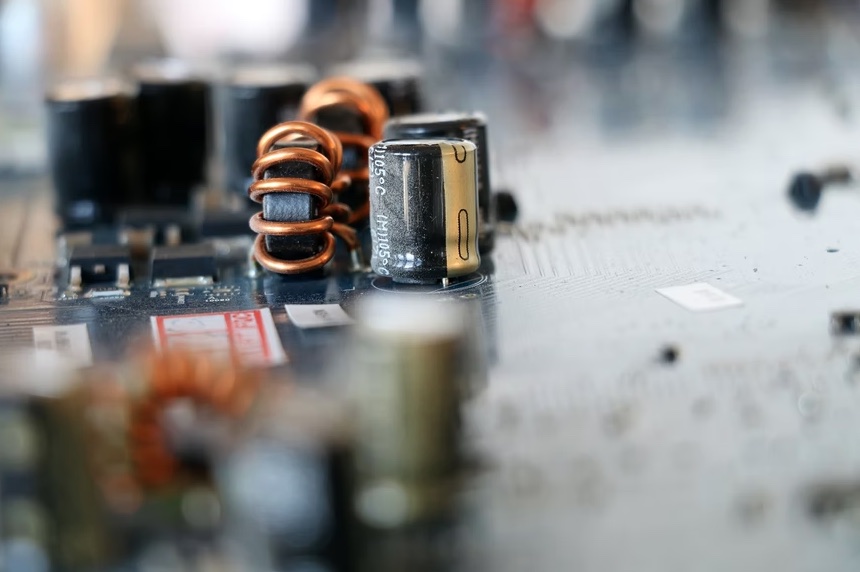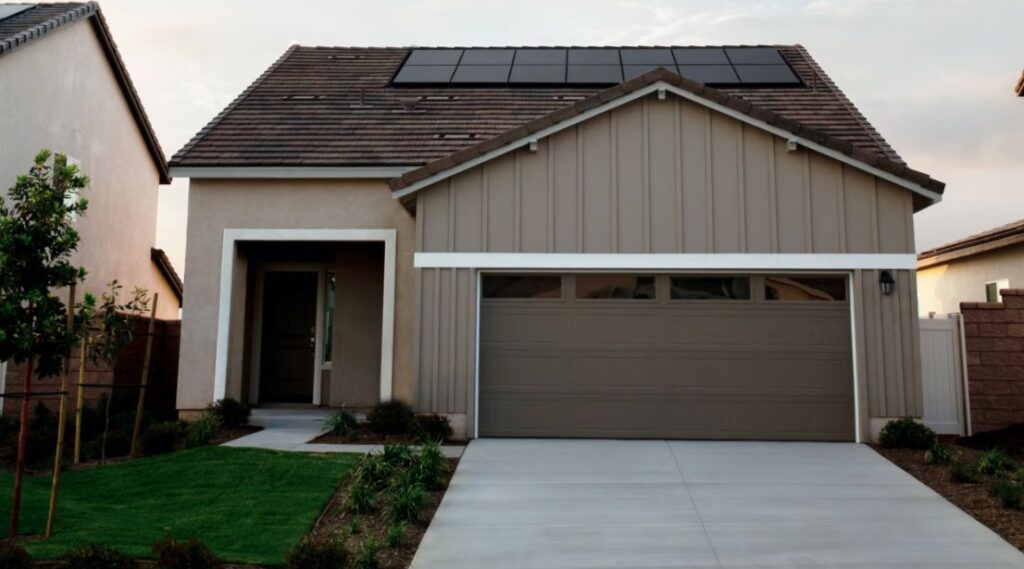If you want to connect solar panels to a battery bank, the MC4 connector is your best bet. They don't call for any special equipment to utilise either. No damage will be done to the connectors or the wires when they are unplugged. These connectors are a must for anyone who chooses to live off the grid since they permit instantaneous separation of power sources in the event of an emergency.
All modern solar panels feature a redesigned MC4 connector that is protected against water and dust by an IP67 rating. But MC4 is incompatible with the earlier MC3 connectors. Both 4mm and 6mm solar cables are compatible with the MC4 connections. You can safely extract electricity from a modern solar panel (often anything over 30 watts) thanks to the two 500 mm to 900 mm lines that come pre-attached with MC4 connections.
The MC4 Connector is widely used on solar panels. On the rear of most solar panels, you'll find two wires that each connect to a male and female MC4 connector. This post will teach you how to crimp MC4 connections to construct solar panel extension wires so you may extend the wires to your charge controller.
Most high-powered solar modules today have MC4 connectors already installed on their wire leads, so if you're wondering how to use mc4 connectors, you've probably already observed that's how they're made. In the past, solar modules had a junction box on the rear, and the installer had to physically connect the positive and negative wires to the terminal posts. Some people still utilise this approach, but the days of its widespread popularity are numbered. As a result of how fast and easy they make wiring your solar array, most modern solar modules employ MC4 connectors. Male and female versions of the connectors are available for use in a simple snap-together system. They are approved by the Underwriters Laboratories and are the recommended way of connection by electrical inspectors, in addition to being UL-certified and meeting National Electric Code criteria. The MC4 connectors are weatherproof and inconveniently unpluggable thanks to their locking mechanism. In order to disconnect the connectors, you will need an MC4 unlocking tool.

Where And When Would You Use An Mc4 Connector?
The main factor here is the solar panel. All of them are built to withstand the elements and prevent UV deterioration for dependable outdoor use, although their sizes vary for certain applications. Low-power solar panels (those with an output of less than 30 watts) generate weak currents. Since they function adequately as standalone components, the termination technique is usually ignored. On the other hand, solar panels with a higher wattage (more than 20) are built to withstand more force. They are grouped together electrically so that the higher voltage can be terminated in a uniform manner. This necessitates a snug fit between the MC4 connectors.
Do Mc4 Connectors Have A Set Number Of Pieces?
There are five individual pieces that make up each MC4 connector. You'll need the a seal retainer, a metal crimp contact, screw-on cap, primary housing, and a rubber water seal at the end. There is a distinction between the male and female MC4 connectors, most notably in the metal and housing contact that they employ. All of its other components are fully replaceable. Some MC4 connectors also feature detachable security clips for added peace of mind. As a result, they shield the interlock tabs against accidental disconnection.

Positive And Negative Mc4 Connectors
Keep in mind that every wire has a male and female connector at its beginning and end. It has a male connector at one end and a female connector at the other. Take care to distinguish between the two and avoid the trap of incorrectly reasoning, "I usually place male connectors on positive circuits." To reframe this, imagine that you are a female mc4 connector that has to connect to a male mc4 connector. (You should probably buy some extra MC4 connectors, since you'll probably make a mistake or two.)
Connectors Of The Mc4 Type, And Their Characteristics
Since MC4s for 8 AWG gauge cables are not widely used, we will only discuss those for 14AWG, 12AWG, and 10 AWG, which are all the same. The MC4 is distinguished primarily by the following features:
- According to the International Electrotechnical Commission (IEC), the nominal voltage is 1000V DC, and the actual voltage is 600V / 1000V DC (according to UL certification)
- Current rating: 30A
- Resistance at the point of contact is 0.5 mOhms.
- Tinned copper alloy is the material of choice for the connector's ends.
- The IP rating is 67 for female terminals and 68 for male ones.
- 105 degrees Fahrenheit is the maximum safe temperature (according to IEC)
Structure of an MC4 plug and socket
This part will be split in half because distinguishing between male and female MC4 connectors is crucial, both for the housing and the contact sheets. The gland connectors and the staples used to secure the contact sheets inside of the MC4 are the sole components shared by all MC4 connectors. MC4 connections are identified by their housings rather than their contact sheets since the contact sheet of a male MC4 is female and the contact sheet of a female MC4 is male. Be cautious to avoid baffling them.
Components Of A Male Mc4 Plug
The housing and the connection foil are what set a male MC4 connector apart from a female version. A male connector case is contrasted by a female connector plate. The male MC4 connector contains the anchoring tabs and an O-ring that prevents any moisture or dust from getting in.
Female Mc4 Connector Components
Though the housing is known as a "female MC4" connector, the connection plate is clearly male. The tabs of the male MC4 connection housing are secured to this connector. The female connection sheet on these connections is designed with unique grooves (see Figure 5) to ensure a spotless connection. This enables a solid connection between the male and female connectors when they are finally joined.
Is There A Guide For Properly Installing Mc4 Connectors?
Cables Can Be Shortened To The Desired Length.
Use a pair of Cable Cutters or wire strippers to snip off the excess length of your B&S cables or to cleanly sever the end of your Solar Panel Fly Leads.
Using A Screwdriver, Remove The 'screw Cap' From The First Mc4 Connector.
Every MC4 Connector consists of four individual parts.
Pull The Cable End Through The Screw Cap.
Make sure you put the screw cap on the right way, because taking it off will be a pain if you do.
Bring The Gland Of Cable Onto The Cable.
Make sure you put the screw cap on the right way, because taking it off will be a pain if you do.
Connect Mc4 Pin To Wire's Stripping Copper End.
Move the MC4 Terminal/Pin onto the Copper Stripped end of the cord. To properly fasten the terminal contacts, use a crimper. The copper wire is fastened to the contact by crimping the termination onto the cable.
Follow The Diagram Below To Attach The Mc4 Connector's Main'male' Component To The Cable.
In order to screw and tighten the MC4 connector, the Screw components must align in the centre. Before securing an MC4 Connector, make sure the components have been pushed all the way to the cable end.
To Make A Secure Connection, Move The Initial Screw Cap Down The Cable Until It Engages The Mc4 Connector, And Then Tighten.
If you've done everything right, you should be able to tug on the cable's end and the MC4 connector won't budge.

What Equipment Is Needed to Work with Mc4 Connectors?
It takes a few different types of specialised equipment to work with MC4 connectors. One of the most vital tools is a crimp tool, and another is a pair of disconnect/spanner wrench combo tools. A crimping tool is not complete without a hinged, removable contact holder. It aids in producing uniform and within-spec terminations. Crimping tools that lack this feature should be avoided at all costs.
Before hooking up your connection to your solar panels or charge controller, you should perform a continuity test with the new MC4 connectors. It's the best way to ensure a long-lasting friendship. If you have solar panels when the sun is shining on them, or if you have them hooked up to a battery, please remember to never unplug the connectors or you risk being electrocuted by your free green electricity.
Conclusion
There is a common use for the MC4 Connector on solar panels. A male and female MC4 connector are typically seen on the back of solar panels, with two wires connecting them. The locking mechanism of the MC4 connectors makes them waterproof and tough to unplug. They are manufactured by Multi-Contact, the authorised supplier of MC4 connectors. Waterproof, UV-resistant, and quick-connect/disconnect, the connectors can tolerate currents of up to 20A and voltages of up to 600V.
They are available in lengths from 8 feet to one hundred feet. An extender cable of 50 feet in length serves this purpose admirably. Keep in mind that the two solar modules you have already connected use a male MC4 connector on the positive line and a female MC4 connector on the negative lead if you are utilising MC4 connectors. Both the beginning and the end of each MC4 wire are fitted with male connectors. Make sure you know the difference and don't jump to conclusions.
Due to the very low prevalence of 8 AWG gauge cables, only MC4s for 14 AWG, 12 AWG, and 10 AWG will be discussed here. There are four separate components that make up an MC4 Connector. This connector is used to fasten the tabs of the male MC4 connection housing. Each of these connections features a female sheet with a set of grooves that are exclusive to that type of connection (see Figure 5). This ensures a secure bond between the male and female ends of the connectors. Working with MC4 connectors necessitates the use of several distinct pieces of specialised machinery. The contact holder of a crimp tool should be hinged and detachable. Connectors to batteries or solar panels should not be disconnected while they are receiving sunlight.
Content Summary
- The MC4 connector is ideal for linking solar panels to a storage battery.
- The MC4 plugs can be used with either a 4mm or a 6mm solar wire.
- There is a common use for the MC4 Connector on solar panels.
- A male and female MC4 connector are typically seen on the back of solar panels, with two wires connecting them.
- In order to lengthen the wires connecting your solar panels to the charge controller, you will learn how to crimp MC4 connectors in this post.
- The connections come in both male and female forms, allowing for a straightforward snap-fit connection.
- You'll need an MC4 unlocking tool to remove the plugs.
- Multiple contacts are meant by the abbreviation "MC4", which stands for "Multi-Contact, 4 millimetres."
- An MC4 connector makes it easy to string together a series of panels.
- MC4 connectors are used on most modern solar panels over a certain size.
- They are manufactured by Multi-Contact, the authorised supplier of MC4 connectors.
- Understandably, MC4 extension cords can be puzzling to some.
- Please make sure you have a solid grasp on how to properly determine the length for connecting your panels, as we cannot accept returns on shortened wires.
- An MC4 extension cable is similar to a regular power cord in many respects.
- It is necessary to use MC4 cables to move the power from the series connection of the two modules to where your electronics are situated (usually a circuit breaker and a solar charge controller).
- Extension cables can be useful in some situations, but they are usually not practicable when connecting solar panels to a house or lodge because of the enormous distance the line must traverse.
- Let's say you're connecting two modules to a power source and you need 20 feet of cable to do it.
- You need only one additional extension cord.
- An extender cable of 50 feet in length serves this purpose admirably.
- Keep in mind that the two solar modules you've already wired up both have a male MC4 connector on the positive line and a female MC4 connector on the negative lead if you're using MC4 connectors.
- To get to your gear from here, you'll need a male and female wire connector that can span 20 feet.
- To do this, you can cut the 50-foot extension chord in half.
- As a result, you may use either of the solar panel's cables to make your connection, and you'll have enough wire to travel anywhere you need to go.
- Sometimes cutting the cable in half isn't the greatest solution.
- The solar panel is the key element here.
- A close fit is required between the MC4 connectors to achieve this.
- Mc4 Connectors, Both Positive and Negative Each wire has a male and a female end connector, so keep that in mind.
- To put it another way, picture yourself as a female mc4 connector in need of a male mc4 connector. (The highest allowable temperature is 105 degrees Fahrenheit (according to IEC) Plug and socket configuration for MC4 connectors Since it is critical to note whether an MC4 connector is male or female on the housing and the contact sheets, this component will be subdivided in two.
- Because the contact sheet of a male MC4 is female and the contact sheet of a female MC4 is male, MC4 connections are always recognised by their housings rather than their contact sheets.
- This connector is used to fasten the tabs of the male MC4 connection housing.
- A clean connection is guaranteed by the special grooves etched into the female connecting sheet (see Figure 5).
- Once the male and female connections are connected, they will be securely fastened.
- If your B&S cables or solar panel fly leads are too long, you can trim them down with a pair of cable cutters or wire strippers.
- The first Mc4 connector's'screw Cap' must be unscrewed using a screwdriver.
- There are four separate components that make up an MC4 Connector.
- To use, simply thread the cable's end through the cap.
- Place Cable's Gland on the Cable.
- Swap out the wire's Copper Stripped end for one with an MC4 Terminal/Pin.
- It is recommended that a crimper be used to securely connect the terminal contacts.
- Please Refer To The Attachment Diagram Below To Attach The Main'male' Component Of The Mc4 Connector To The Cable.
- Aligning the Screw components in the connector's centre is essential for screwing and tightening.
- Make sure the components have been pushed all the way to the cable end before you secure the MC4 Connector.
- If you've done everything correctly, the MC4 connector at the cable's end shouldn't budge when you pull on it.
- Working with MC4 connectors necessitates the use of several distinct pieces of specialised machinery.
- Conduct a continuity test with the new MC4 connectors before connecting them to your solar panels or charge controller.
Frequently Asked Questions About MC4 Connectors
MC4 connectors are single-contact electrical connectors commonly used for connecting solar panels. The MC in MC4 stands for the manufacturer Multi-Contact (now Stäubli Electrical Connectors) and the 4 for the 4 mm diameter contact pin.
Wiring MC4 Equipped Modules in Series:
One wire is the DC positive (+), and the other is the DC negative (-). Generally, the female MC4 connector is associated with the positive lead, and the male connector is associated with the negative lead.
MC3 connectors have been largely superseded by MC4 connectors due to support being withdrawn by the National Electrical Code for solar applications. In addition, the MC3 connector does not incorporate a positive locking mechanism and can become disconnected while the solar panels are producing electricity, causing dangerous arcing.
Yes, the MC4 connectors are waterproof and can be disconnected repeatedly.
These solar panel connectors are available in male and female types made to snap together. Connectors are of various types, the major ones being MC3, MC4, PV and Tyco Solarlok. Similarly, they come in many shapes such as T-Joint, U-Joint, X-Joint or Y-Joint. However, the most common type of solar connector is the MC4 connector.

